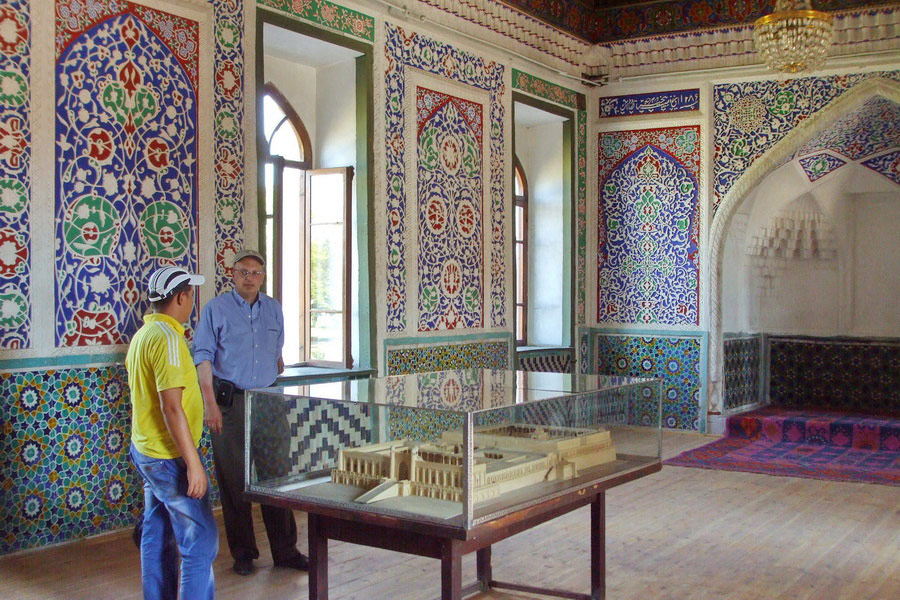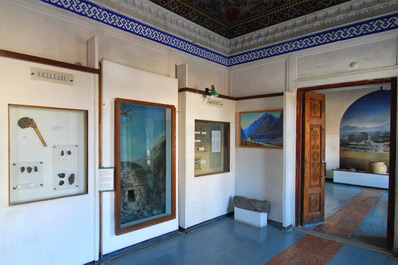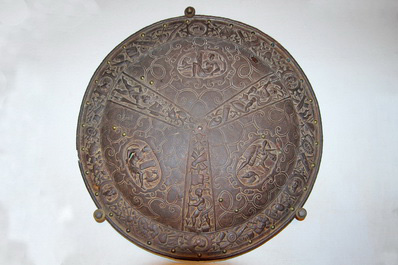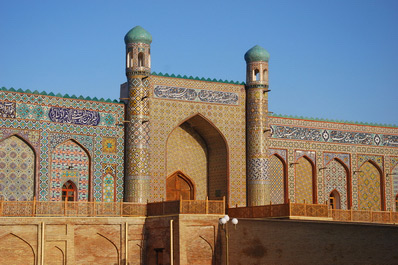Kokand Regional Studies Museum

Kokand Regional Studies Museum is one of the most important cultural landmarks in Uzbekistan, located in the historic city of Kokand. The museum preserves the heritage of a region that once played a vital role along the Great Silk Road and continues to attract those with a passion for architecture and art. It is housed in the grand palace of Khudoyar Khan - long celebrated as the crown jewel of the Kokand Khanate and a striking example of the craftsmanship of Uzbek architects.
History
The palace was constructed in Kokand between 1866 and 1870 during the reign of Khudoyar Khan, one of the last rulers of the Kokand Khanate. In 1876, when Russian troops occupied the city, the palace was repurposed to house a Russian garrison. It later became the site of a parish school, and an Orthodox church was installed in its throne room. During the early Soviet period, the palace served various institutional functions until 1925, when it was officially transformed into the Kokand Regional Studies Museum.
Originally, the palace covered a vast area, featuring seven courtyards and 119 rooms. However, much of the complex was damaged during military conflicts with the Russian army and has since been lost. Today, only two courtyards and 19 interior rooms remain.
Museum Collection
Over the years, the museum has built an extensive collection of artifacts that reflect the region’s history, culture, daily life, and traditional crafts. Exhibits include locally made furniture crafted for the khan’s court, household items, weaponry, manuscripts, and rare folios. A highlight of the museum is a display of military gifts once presented to Khudoyar Khan by foreign dignitaries - among them, swords, shields, and a conquistador's helmet brought to Kokand by a Spanish diplomatic mission.
One of the museum’s halls is devoted to the flora and fauna of the Fergana Valley, where visitors can see taxidermy specimens of animals that once roamed the region.
The museum also engages in active research, focusing on the historical and cultural development of the area. In addition to its academic work, it regularly organizes exhibitions, thematic seminars, and traditional festivals, all of which contribute to the preservation and celebration of Kokand’s rich heritage and that of the wider Fergana Valley.
Architecture and Design
The architecture and interior design of Khudoyar Khan’s palace are key elements of the museum experience. Its splendor rivals that of the Gur-Emir Mausoleum in Samarkand and the imposing Ulugbek Madrasah in Bukhara. The palace façade is adorned with intricately carved tiles featuring interwoven geometric patterns and vivid arabesques. The deep blues and turquoise tones evoke the sky, while golden and ochre accents reflect the glow of sunrise and sunset.
The inner courtyards - framed by graceful arcades with tall, ornately carved wooden columns - are especially captivating. These architectural elements underscore the palace’s grandeur while also evoking the warmth and intimacy typical of Eastern design.
The Kokand Regional Studies Museum is more than a collection of historical artifacts - it is a vibrant cultural space where the past and present converge. Through its exhibitions, research initiatives, and cultural programming, it plays a vital role in preserving and interpreting the region’s heritage, encouraging visitors to connect deeply with the traditions and history of Uzbekistan.





